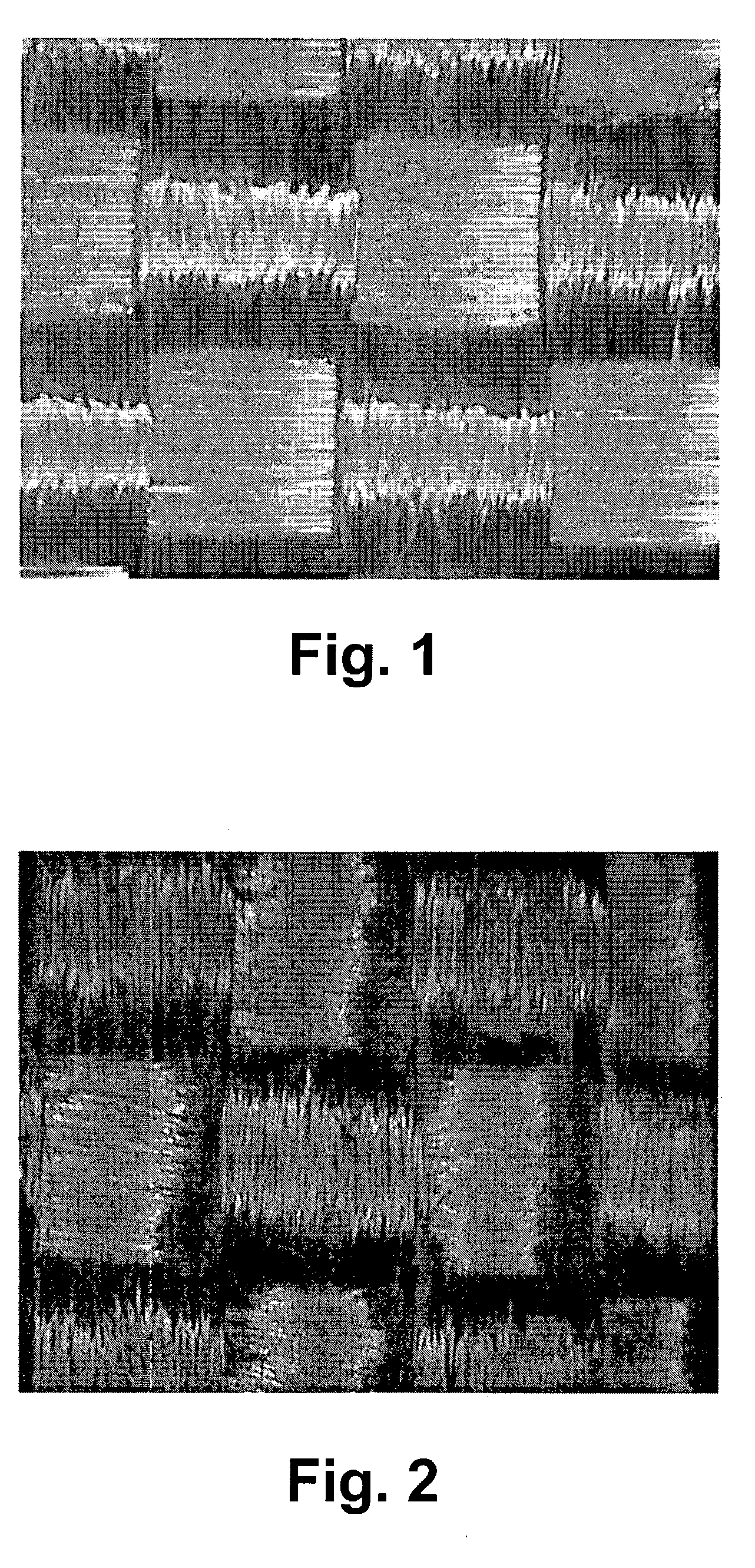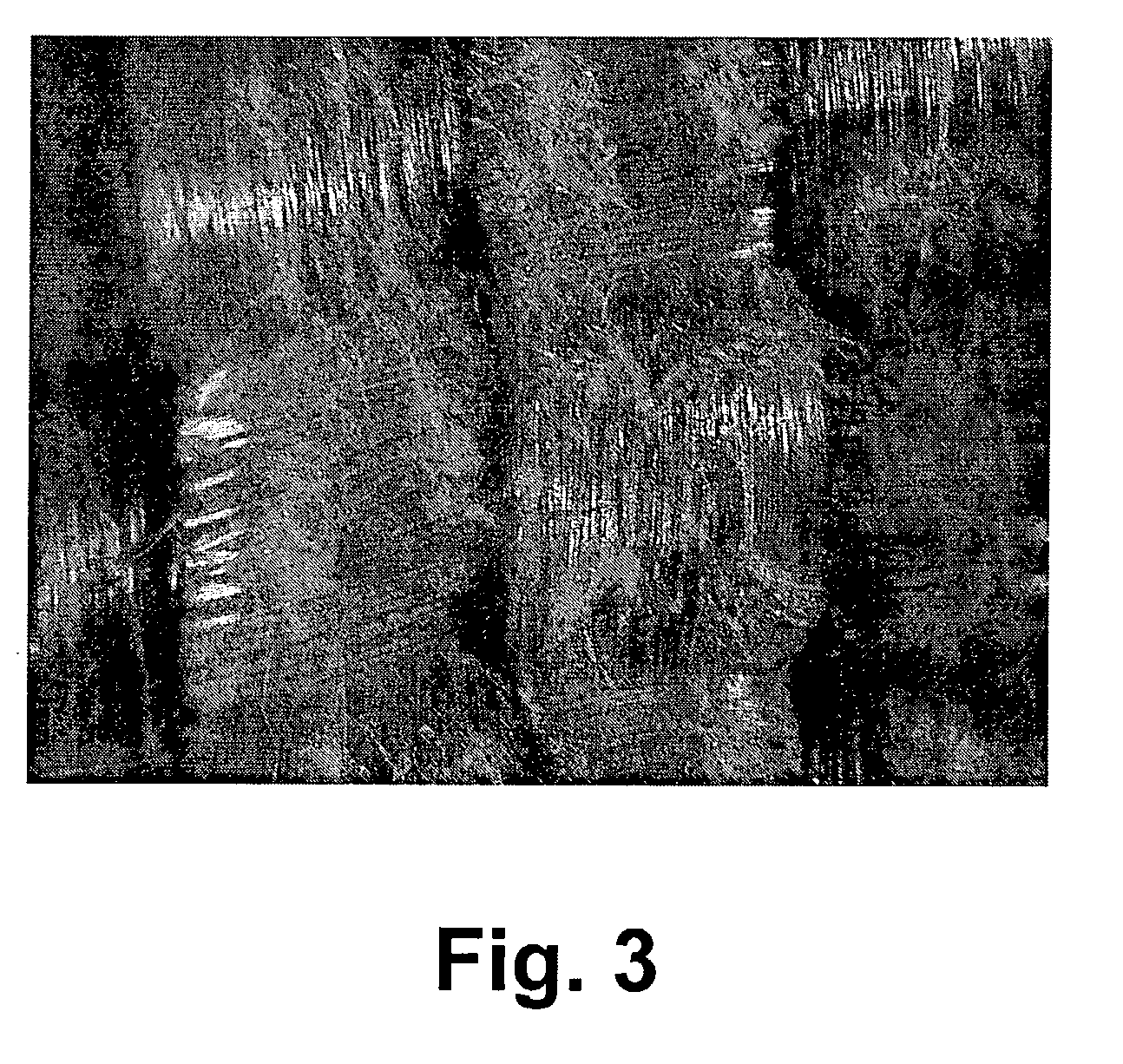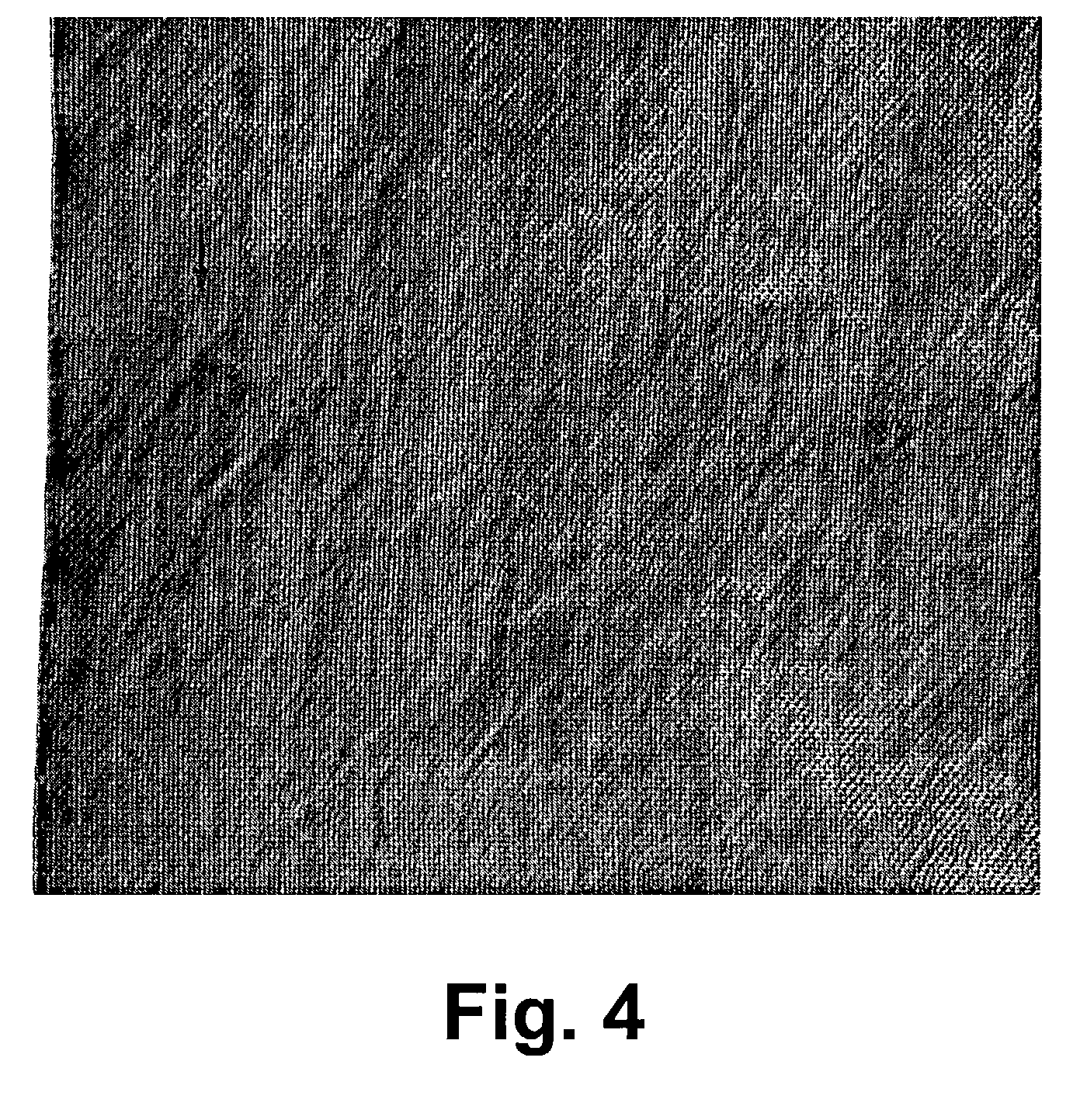Stab resistant and anti-ballistic material and method of making the same
a technology of anti-ballistic material and anti-stab technology, applied in the field of protective fabrics, can solve the problems of not being able to wear multiple layers of protective wear, not being able to protect from only one of these threats, and being quite bulky and uncomfortabl
- Summary
- Abstract
- Description
- Claims
- Application Information
AI Technical Summary
Benefits of technology
Problems solved by technology
Method used
Image
Examples
Embodiment Construction
represent fabrics subjected to a post-fabric formation agitation treatment process. Single plies of the fabric were agitated in an agitation type washing machine in the presence of hot water (15 minute wash cycle at 50.degree. C.) and a commercial detergent (GAIN.RTM.), followed by a 5 minute rinse cycle in cold water of approximately 20.degree. C., and a 5 minute extraction cycle. The plies were allowed to air dry naturally, and then formed into the multiple ply structure for testing. Comparative Examples 1-4 represent fabrics used as is without the agitation treatment.
[0065] The results of the spike threat (weight 1900 g, drop height 280 cm) are shown in Table 1.
1 TABLE 1 Number Panel of Weight Fabric Plies (g / m.sup.2) Penetration? Example 1 TWARON .RTM. 550 10 .about.2100 No Example 2 TWARON .RTM. 840 8 .about.2250 No Example 3 TWARON .RTM. 930 14 .about.2350 No Comparative TWARON .RTM. 840 16 .about.4000 Yes Example 1 Comparative TWARON .RTM. 210 22 .about.2640 Yes Example 2 Com...
PUM
| Property | Measurement | Unit |
|---|---|---|
| Fraction | aaaaa | aaaaa |
| Fraction | aaaaa | aaaaa |
| Angle | aaaaa | aaaaa |
Abstract
Description
Claims
Application Information
 Login to View More
Login to View More - R&D
- Intellectual Property
- Life Sciences
- Materials
- Tech Scout
- Unparalleled Data Quality
- Higher Quality Content
- 60% Fewer Hallucinations
Browse by: Latest US Patents, China's latest patents, Technical Efficacy Thesaurus, Application Domain, Technology Topic, Popular Technical Reports.
© 2025 PatSnap. All rights reserved.Legal|Privacy policy|Modern Slavery Act Transparency Statement|Sitemap|About US| Contact US: help@patsnap.com



